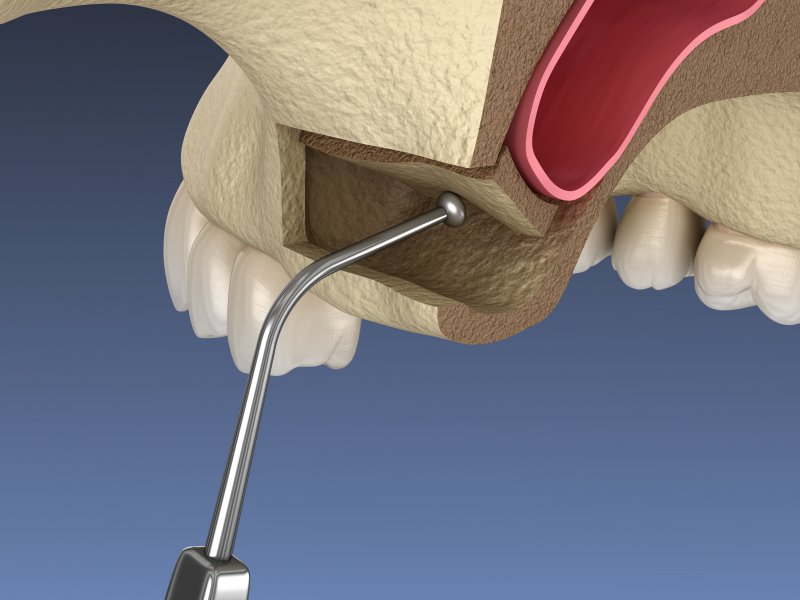
Dental implants require a firm foundation to ensure optimal stability and support once a custom restoration is secured. For many patients, especially those living without teeth for some time, this often means undergoing additional procedures to help improve jawbone density. If your dentist recommends a sinus lift before clearing you for dental implant surgery, here’s why.
What Does the Jawbone Have to Do with Dental Implants?
As mentioned earlier, the jawbone is the foundation for dental implants – the titanium posts used to support your new smile. If teeth are missing for an extended period, the underlying bone no longer receives necessary stimulation, which can cause it to weaken over time.
Without ample jawbone density, dental implants can fail, resulting in countless hours and money being spent on an unsuccessful attempt to replace missing teeth.
Why a Sinus Lift is Often Recommended
If dental implants are to fill in the gaps left behind by molars and premolars, your dentist will want to evaluate the area that exists toward the back of your mouth, along the upper arch, to determine if a sinus lift is necessary.
If you’re unfamiliar with this method of treatment, a sinus lift is a surgical procedure that focuses on lifting the maxillary sinuses upward so that a bone graft can fill in the space left behind by missing teeth. This is often recommended if:
- You lack jawbone density because of periodontitis
- You suffer from a receding jawbone as a result of prolonged, untreated tooth loss
- You’ve had a cyst removed from this area
- You’ve suffered significant facial trauma to the jawbone
How is a Sinus Lift Performed?
A sinus lift begins with your dentist or an oral surgeon administering local anesthesia to numb your mouth. They will then make a small incision in the gums so that the space and underlying bone are exposed.
After creating an opening in the bone, the cavity membrane is lifted upward so that bone grafting material can be inserted into the space. The type of material that is used is often taken from another part of your mouth or the bone tissues of a cadaver.
When finished, the gums will be closed so that the new and existing bone can integrate over time. Once this is accomplished, the process of placing dental implants can begin.
Not everyone who requests dental implants requires a sinus lift; however, if your dentist does recommend it, don’t be alarmed. Instead, view it as the most effective way to ensure the health and lifespan of your future smile.
About the Author
Dr. Lauri Barge completed her dental doctorate at Texas A&M College of Dentistry. Operating her own practice and working as a family and cosmetic dentist in Flower Mound, she and her team help patients who are dealing with tooth loss. Offering dental implants as a superior solution, she can recommend additional treatment options, such as a sinus lift, to ensure these prosthetics last as long as possible once they are put into place. If you want to replace missing molars but are unsure if your jawbone is dense enough, contact us via our website or by calling (972) 539-3800.
